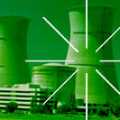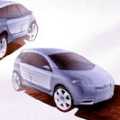|
作者:艾默•拉文士 與 杭特•拉文士
美國國內的能源與輸送設施非常禁不起考驗,這種情形讓美國能源安全所面臨的威脅,恐怕不下於美國對於中東石油的依賴。因此,如果要用自產的能源生產系統來取代中東地區的石油進口,可能反而會減低美國的能源安全度。
讓能源的供應來源過度集中於某個地區,等於是鼓勵敵人對我們進行毀滅性的攻擊。1982年,我們曾經為美國國防部做過一次研究,主題為:「脆弱的能源:為了國家安全所應採行的能源策略」,我們發現,少數的有心人士竟然就有能力停止四分之三輸往美東各州的石油與天然氣(而且只要在路易斯安那州州境內就可做到)、切斷各大城市的電力,或是把飛機撞毀在核電廠,造成百萬人的死亡,這些情形到今天仍然有可能發生。也因此,如果我們讓這種高度集中而又脆弱的能源系統再加以擴充,只會危及我們的國家安全。

核電廠:比科幻小說還科幻的東西
基本上,能源安全問題比較不能歸類為國外進口與自產能源之爭的問題,也不是我們缺乏多少大型的能源生產設施,真正的問題是在於這些生產能源的工業設施,其基礎架構的安全漏洞重重。我們要知道,能源生產系統不是建在美國或建得很大就一定安全,而是其基本的設計必須要能杜絕能源系統發生大規模故障失靈的可能性,並能在地方性的故障事故中倖存。要確保能源安全,必須從提高能源使用效率、降低能源使用量來著手,然後我們所需要的能源來源,其安全性自然就會大幅提昇,因為供應能源的地區將會分散各地,能源的種類也越趨多樣,其中可再生能源的比例也會日漸增加。
這種策略其實並不會花費很高的成本,在目前的市場機制中,它甚至早就是有利可圖的作法;舉例來說,如果以中央集中式的發電廠來作供電的中樞,不管這個發電廠運作得再好,也無法提供真正便宜與可靠的電力,因為透過管線傳輸電力的成本將會高於發電的成本,而輸送管線也往往是造成停電的主要原因。但如果是就地取材或是由鄰近的小型能源發電方式取得電力,其價格將大大降低,也會消除電力輸送與電磁干擾而流失的電力,並且可以將廢熱再加以利用,所以明智的投資者都會選擇這種發電方式。
燃料的天堂
當然,我們的石油很多都由中東地區進口而來,這是一個嚴重的問題,因為從一個不穩定的波斯灣地區取得石油,會讓美國變得不安全,並使得美國被一些並不討人喜歡的政權所束縛。雖然只22%的石油是進口自波斯灣(五分之三是來自西半球),但是減少對中東石油的依賴仍然是明智的選擇。但要做到這一點,就必須花錢投資最新與最便宜的能源系統,這樣子我們所投入的時間,以及花費的每一分錢,才能為我們提供最好的解決方案,我們不需要去找另一個原油生產地,我們需要的是一套可以把燃料安全地送到顧客手上的供輸網絡,這才是治本的方法。
能源效率的研究目前正被快速運用,成為另一種能源的來源;跟1975年相比,去年(2000)美國每生產一塊錢美金的GDP,所使用的能源減少了40%,所使用的石油也減少了49%,而這些省下來的能源目前就是最大的「能源來源」,相當於美國本土石油生產量的5倍。這些成就大部分是在一開始的6年中完成(也就是1979年到1985年),在那6年間,美國的GDP成長了16%,但石油使用卻下降了15%,同時從波斯灣進口的石油量也下降了87%,只要能保持這樣的步調,那麼在1985年之後,可望完全不需由波斯灣進口任何石油。
現代的能源效率科技每一年還能為美國人省下3千億美元,只要輕型車輛每一加侖能多跑個2.7英哩,那麼我們就完全不需要從波斯灣進口任何石油。節省能源是我們頓挫OPEC市場力、降低石油價格,以及獲得穩定安全能源供應的終南捷徑;同時另一方面,改善燃料效率也能有助於確保國家安全,國防部科學委員會(對國防部部長相當有影響力的顧問委員會)日前即指出,在軍事上節省燃料的潛力,將可達數十億美金。

未來的車子得有更多功能(照片提供 洛磯山研究中心)
接下來,我們也發現,有很多新方法可以讓燃料的供應更加安全、迅速與更具競爭力,如果我們都能妥善運用,大片的農田、森林甚至都市廢棄物都能生產出乾淨的液體燃料;但在此同時,我們並無須犧牲表土、農民、鄉村文化、氣候以及進步的生活形態。生產這種地方性的生物燃料,其效益遠勝過鋪設脆弱的管線,同時也能提供更多工作機會。同時,目前也有另一項令人心動的發明,就是利用天然氣或再生能源的燃料電池(曼哈頓地區的Conde-Nast大樓在不花費任何額外成本的情況下,不但成功省下一半的能源,且結合利用兩種可靠而又知名的能源-燃料電池與太陽能電池,因而有著超越對手甚多的表現),整體來說,這些證實可行的替代方案可以迅速地、安全地、有利地替代石油,假以時日,更將完全取代石油。
【文章連載】
■管線不安全,美國倒大楣 (上)
全文與圖片詳見:http://www.gristmagazine.com/grist/im
ho/lovins112001.asp
版權歸屬Earth Day Network,環境資訊協會(陳潁峰 譯,林子倫 審校)
中英對照譯稿請見:http://e-info.org.tw/issue/energy/2002/
en02010101.htm
|
|
by Amory and L. Hunter Lovins
America's fragile domestic infrastructure threatens her energy security at least as much as dependence on oil from the Middle East. Replacing oil from that region with even more vulnerable domestic systems would therefore decrease energy security.
Extraordinarily concentrated energy flows invite and reward devastating attack. In our 1982 Pentagon study Brittle Power: Energy Strategy for National Security, we found that a handful of people could shut down three-quarters of the oil and gas supplies to the Eastern states (without leaving Louisiana), cut the power to any major city, or kill millions by crashing an airplane into a nuclear power plant. All of that remains true today. Expanding such centralized and vulnerable energy systems would threaten our national security.

Stranger than science fiction.
Fundamentally, energy security is less about foreign vs. domestic sources, or a shortage of giant energy facilities, than about the basic architecture of the energy infrastructure. A system is secure not because it's American or big, but because it's designed to make large-scale failures impossible and local failures benign. Energy security starts with using less energy far more efficiently to do the same tasks. Then it gets that energy from sources that are inherently invulnerable because they're dispersed, diverse, and increasingly renewable.
This strategy doesn't cost more; indeed, it's already winning in the marketplace. For example, central power stations, no matter how well engineered, can't supply really cheap and reliable electricity. The power lines that deliver the electricity cost more than the generators, and cause almost all power failures. Onsite and neighborhood micropower is cheaper, eliminates grid losses and glitches, and harnesses waste heat -- so savvy investors favor it.
Fuels Paradise
Of course, oil from the Middle East is a problem. Getting oil from the unstable Persian Gulf leaves America less secure and yoked to unattractive regimes. Although only 22 percent of oil imports come from the Gulf (three-fifths come from the Western Hemisphere), decreasing that dependence is wise. But this requires investing in the fastest and cheapest energy system, so we buy the most solution with every year and every dollar spent. We don't need just another crude-oil source, but an inherently secure supply chain delivering fuel safely all the way to the customer.
Energy efficiency is the rapid-deployment energy resource. Compared to 1975, America used 40 percent less energy and 49 percent less oil last year to produce each dollar of gross domestic product. Those savings are now the nation's largest "source" of energy -- five times domestic oil output. Most were achieved in just six years, from 1979 to 1985, when GDP grew 16 percent, total oil use fell 15 percent, and Gulf imports fell 87 percent. Maintaining that pace could have eliminated all Gulf imports after 1985.
Modern efficiency technologies can put another $300 billion a year back in Americans' pockets. A light-vehicle fleet that was just 2.7 miles per gallon more efficient would eliminate Gulf imports. Saving energy is the fastest way to blunt OPEC's market power, beat down prices, and expand the share of energy supply from invulnerable sources. And national security would benefit from improvements in fuel-efficiency in another respect: The Defense Science Board, an influential advisor to the Defense secretary, recently identified billions of dollars of military fuel-saving opportunities.

Get hyper about cars of the future.Photo: RMI. (Rocky Mountain Institute)
Then there are new ways to supply fuel that are secure, fast, and competitive. Done right, abundant farm, forest, and even urban wastes can yield clean liquid fuels while protecting topsoil, farmers, rural culture, climate, and prosperity. Producing such biofuels locally bypasses vulnerable pipelines and provides more jobs. Another attractive innovation is fuel cells that use natural gas or renewable energy. (Manhattan's Conde-Nast Building outperformed its rivals by saving half its energy and incorporating the two most reliable known power sources -- fuel cells and solar cells -- all at no extra cost.) Together, these proven alternatives can displace oil promptly, securely, profitably -- and, in time, completely.(20 Nov. 2001)
http://www.gristmagazine.com/grist/im
ho/lovins112001.asp
|
